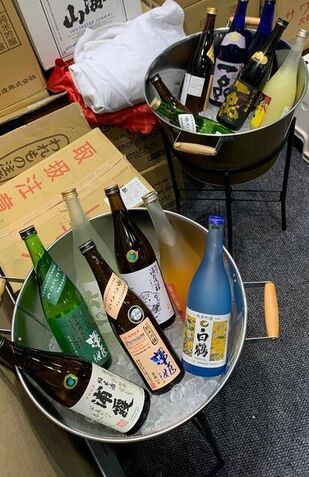 Australia still is not as vast as the international countries, but we are getting there. In the first 20 years, the perception of sake did not exist in the minds of the Australians, which was the same in Japanese culture. Australians were still young to embrace the rice brew inexperience conflicted their minds to be willing to try. Only in the last 10 years did the love of Japanese culture grow when locals travel to Japan. Australians were love-struck by the beauty and culture of food that it created an unforgettable experience. Locals' curiosity about the rice brew and the flight back home left locals' hearts wanting to reminisce again. Australians who travelled or stayed in Japan started to yearn for what they had missed. Access to sake through Japanese restaurants made it possible. However, not all Japanese restaurants had sake on the menu, and nobody qualified was available to advise the best way to enjoy it if they did. however not all japanese restaurants had sake on the menu and if they did nobody could advise the best way to enjoy it. Access to sake was not enough for locals to share their appreciation. Mostly they were confused about what made it so special. Although Japanese sake pairing with food is an enjoyable experience, nobody remembers the sake they drank and alas~ the thought of sake disappeared.  The ambiguity of sake created a gap, clarity needed to be accomplished through a tasting with proper sake etiquette to make the experience leave a good impression. Most locals' first perception of sake, especially if they have travelled to Japan, was it must be drunk hot. Confuse locals commonly would not appreciate how alcohol is drunk this way. Hence they were discouraged from giving sake any room for chance. When the opportunity to drink sake in the room, the cold felt more comfortable to try it. Australia were consistently biased towards sake, but persistent persuasion opened their hearts. Allowing locals to taste broke the iceberg and, with proper instructions, allows the locals to feel safe. Most locals were shocked at first how this brew came to be and, through guidance, wanted more. Acceptance of hot sake was not readily accepted, but the opportunity to experience room and cold did. Most locals had always had the perception that sake was strong. It was hard to understand why customers felt this way, but taste analysis with each tasting opens up another form of lack of understanding. Locals' understanding of strength can be a variety of things; a customer may think it's vital because they don't like a particular taste, or maybe they are looking for a specific flavour. Have something too sweet; perhaps you feel it is firm or too dry because it is not sweet. Whatever the case, we cannot label sake this way. Asking the right questions and doing a taste analysis brought the value of trust to locals more easily.
Currently, locals yearn and continue to enjoy a great restaurant experience. "Go where the crowd is" definitely made an impact on my impression of sake. Through sake pairing and food, a deeper appreciation of the sake world was formed, and locals' thirst grew for wanting more.
2 Comments
|
Categories |
© COPYRIGHT 2021 ALL RIGHTS RESERVED.


 RSS Feed
RSS Feed